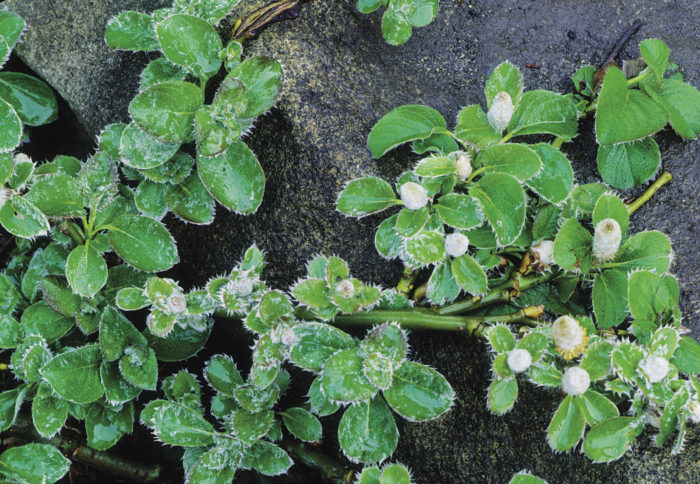
If you’re sick of the same old asters and mums, why not plant an unexpected fall-star instead?
Here some truly out-of-the-ordinary plants for upping your fall garden game in the Northwest. Some of these options provide excellent foliage color while others put on a floral display in the final throws of October.
Looking for some autumnal stars for your containers instead? Read Autumn Pots Minus the Mums by Sarah Partyka for even more out-of-the-box fall planting inspiration.
1. Guernsey Lily
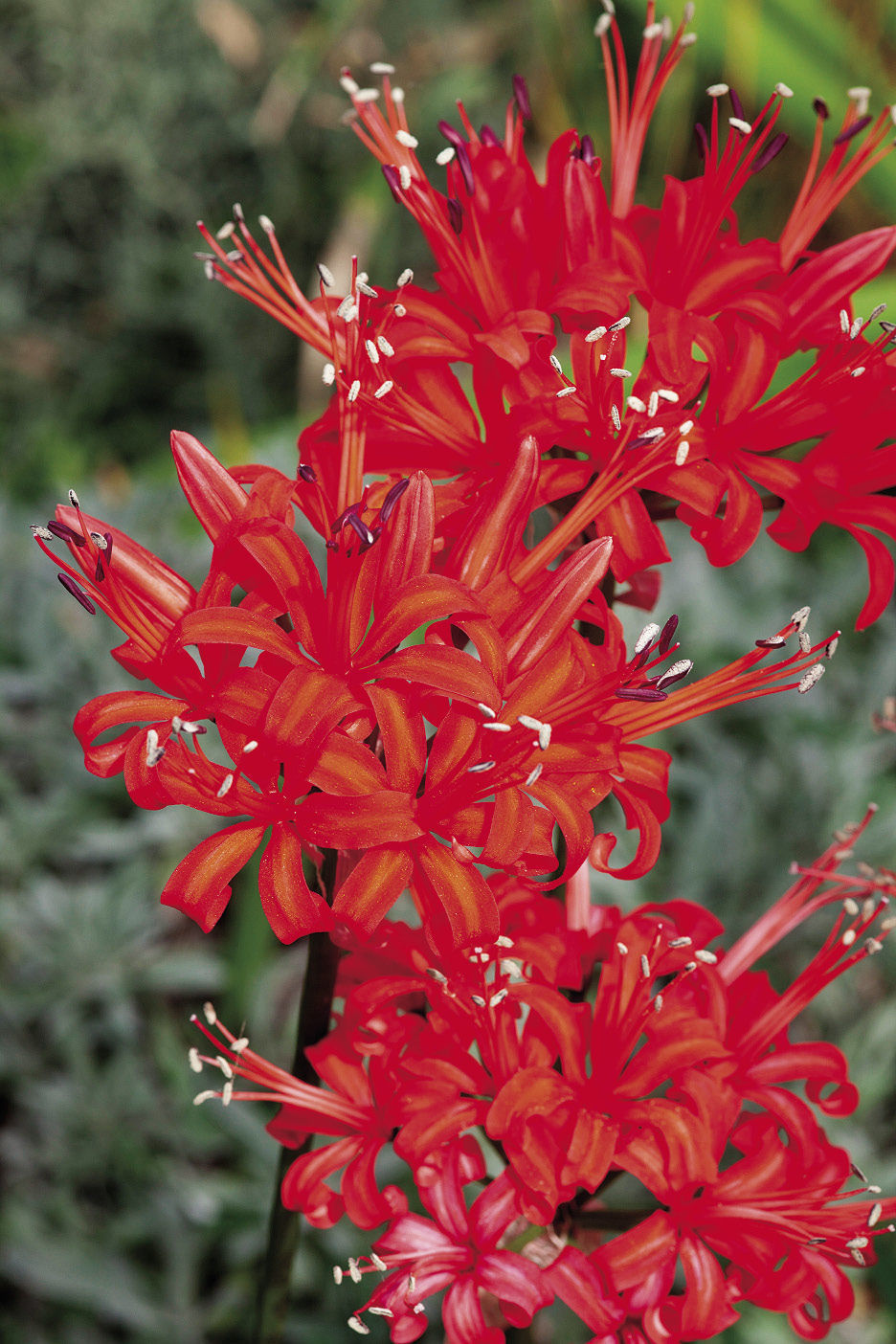
Name: Nerine sarniensis
USDA Hardiness Zones: 8 to 11
Size: 10 to 18 inches tall and 3 inches wide
Conditions: Full sun to partial shade; well-drained soil
The tale of how the Guernsey lily earned its name is just as colorful as its fall-blooming crimson umbels. As legend has it, a box of bulbs, en route to Holland from their native South Africa, was cast away from a sinking ship in 1659, and the bulbs took root on the shores of Guernsey in the Channel Islands—where they still flourish today. The Guernsey lily is a summer-dormant bulb, which sends up sturdy naked stems in late summer topped with deep red to dark orange flowers that bloom from early to late fall. Strappy foliage follows in early winter and persists through spring. Its preferred growing conditions make it particularly suited for shallow containers and rockeries. Plant the bulbs with their tips just above the surface, and add a layer of mulch in winter to help protect them from a hard frost.
2. ‘Gilt Edge’ Toad Lily
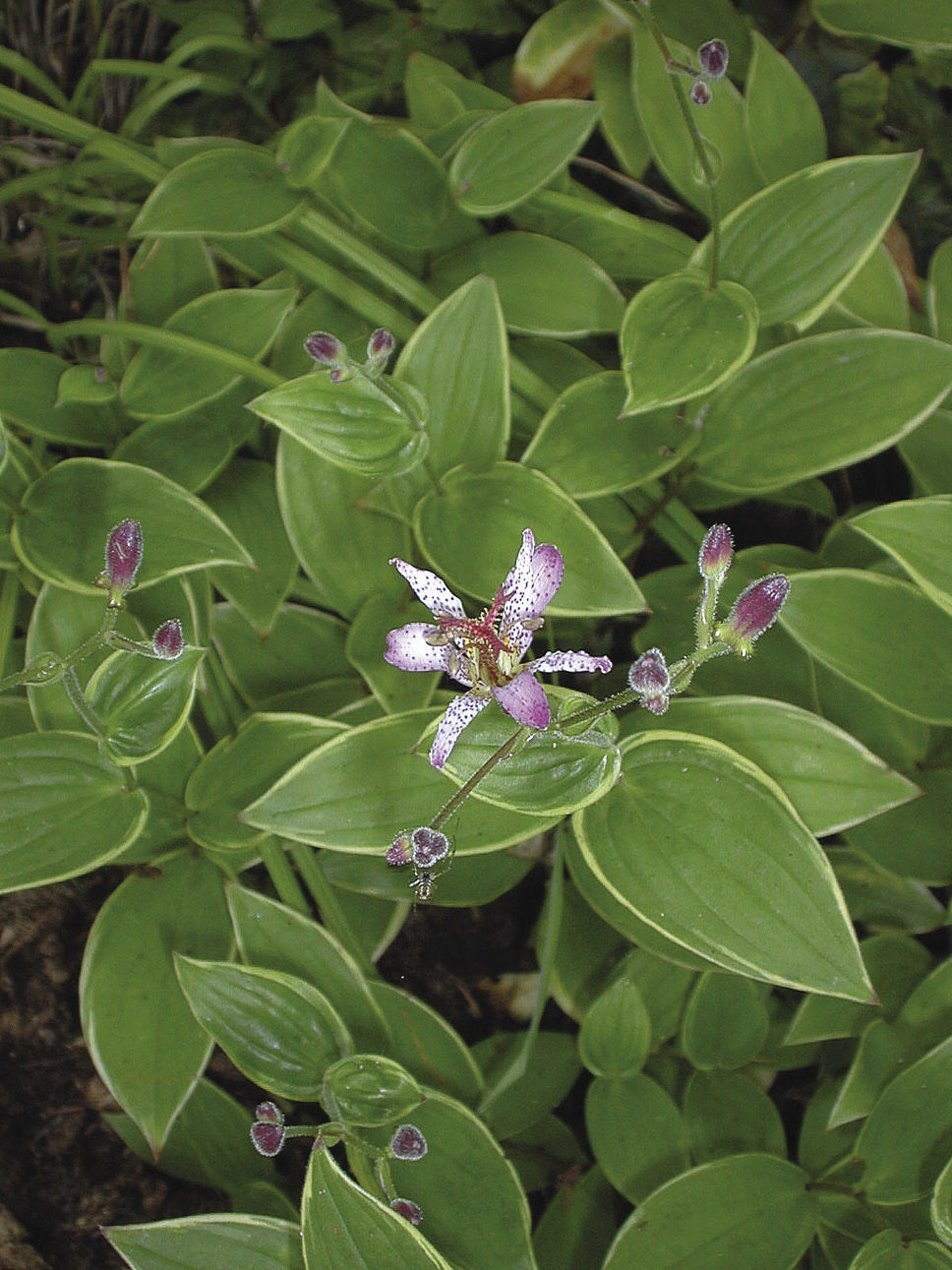
Name: Tricyrtis formosana ‘Gilt Edge’
Zones: 5 to 8
Size: 1 foot tall and 2 feet wide
Conditions: Partial to full shade; moist, well-drained soil
While the exquisite, shiny, gold-rimmed foliage of ‘Gilt Edge’ toad lily is more than enough reason to add the plant to a shady spot in your garden, it’s the clusters of tiny star-shaped flowers that emerge in early to midfall that make this deciduous perennial a true standout. Be sure to plant it close to the edge of a border or along a woodland path, where the detail of its white and purple-spotted flowers can be appreciated. ‘Gilt Edge’ toad lily grows in clumps and will colonize if given the chance, so be sure to give it plenty of space.
3. ‘Burgundy Bunny’ Dwarf Fountain Grass
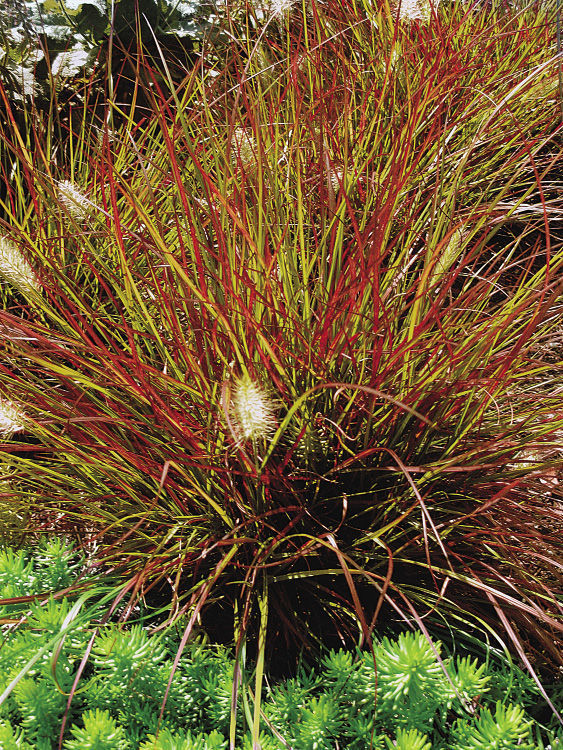
Name: Pennisetum alopecuroides ‘Burgundy Bunny’
Zones: 5 to 9
Size: 12 to 16 inches tall and 16 inches wide
Conditions: Full sun; well-drained soil
This small ornamental grass begins as a neat little tuft of bright green foliage in spring, shows tinges of copper in summer, and transforms into a fiery ball of red by fall. Adding to its striking appearance are the bunny tail–like tufted flower plumes that emerge in late summer. I like to plant it in a place where it can be backlit by the sun, allowing its plumes and scarlet foliage to appear as though the plant were glowing. The diminutive size of ‘Burgundy Bunny’ dwarf fountain grass makes it the perfect plant for interspersing throughout a border or to use alone in a container. An added bonus is that deer won’t snack on it.
4. Creeping Alpine Willow
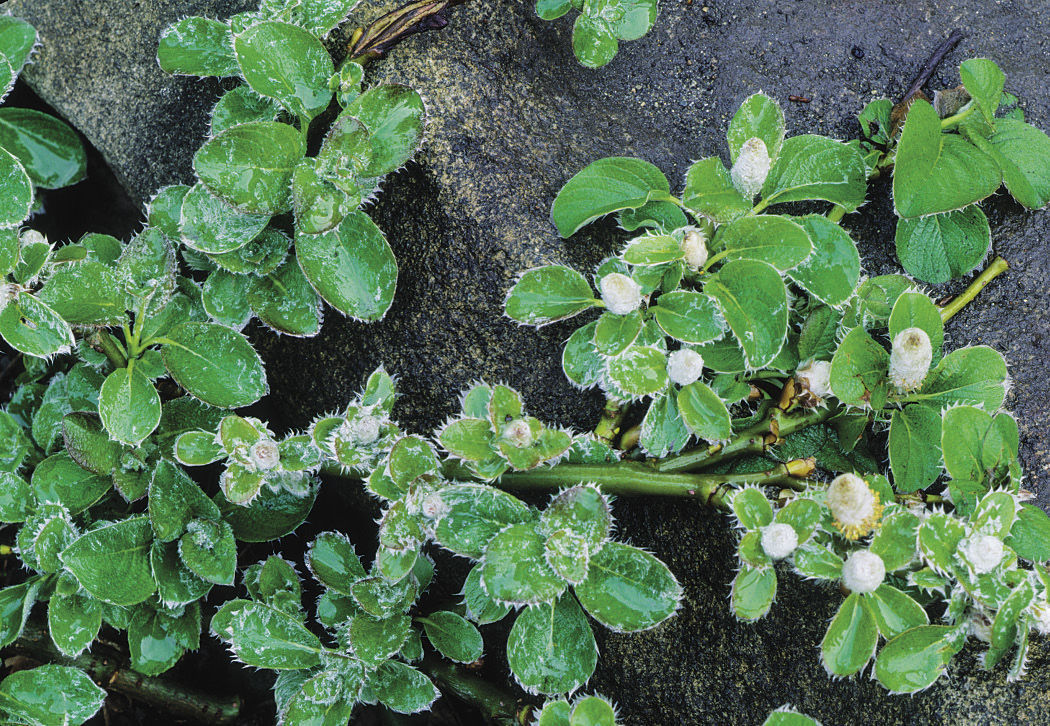
Name: Salix nakamurana var. yezoalpina
Zones: 4 to 8
Size: 10 to 12 inches tall and up to 6 feet wide
Conditions: Full sun to partial shade; well-drained soil
Native to the mountains of Japan, this unusual willow can grow where conditions are harsh. This plant prefers exposed sites, making it well suited for a rock garden, where its intertwining branches can sprawl and spill. Creeping alpine willow also makes a dramatic statement cascading over the edge of a large pot. The plant’s ovate leaves are covered in downy fuzz in spring and turn a striking saffron yellow in fall. Consider it a bold ground cover for a bold gardener.
Courtney Olander is a landscape and custom-container designer with Olander Garden Design in Shoreline, Washington.
Photos: #1, Mark Bolton/gapphotos.com; #2, Joshua McCullough; #3, courtesy of Wayside Gardens; #4, Jerry Pavia
Fine Gardening Recommended Products

Nesco Snackmaster Express Food Dehydrator
Fine Gardening receives a commission for items purchased through links on this site, including Amazon Associates and other affiliate advertising programs.

VegTrug Classic Cold Frame
Fine Gardening receives a commission for items purchased through links on this site, including Amazon Associates and other affiliate advertising programs.

Gardener's Supply Company Summerweight Fabric Plant Cover
Fine Gardening receives a commission for items purchased through links on this site, including Amazon Associates and other affiliate advertising programs.


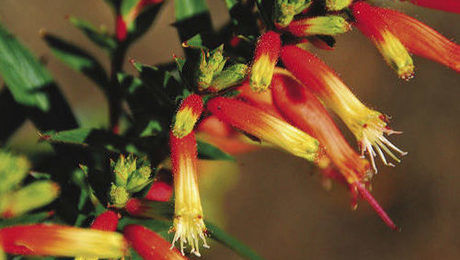

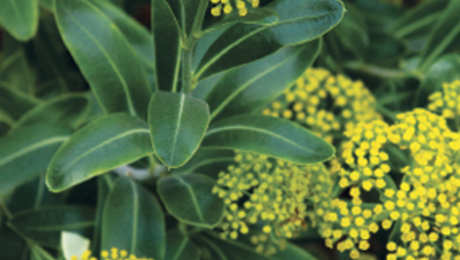














Comments
Log in or create an account to post a comment.
Sign up Log in